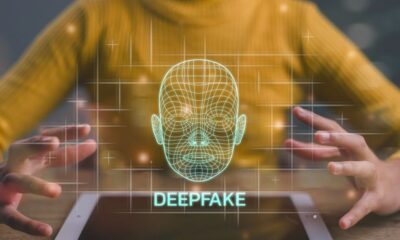World
William Shatner Plans Immortality as a Hologram with StoryFile

William Shatner, the iconic actor known for his role as Captain James T. Kirk in *Star Trek*, is venturing into the realm of digital immortality. At the age of 94, Shatner is collaborating with the AI company StoryFile to create a hologram-style avatar. This innovation aims to allow him to interact with loved ones even after his passing, much like the virtual avatars used by the band ABBA in their recent performances.
The StoryFile program enables participants to “preserve” their stories, wisdom, and experiences for future generations. By creating lifelike, interactive 3D avatars, the technology simulates conversations, allowing users to respond as though they were still present. This approach seeks to provide an avenue for individuals to remain “alive” in the memories of their families.
Advancements in Hologram Technology
At present, StoryFile is managing a waiting list for its service, which has attracted interest from around 2,000 individuals, including notable figures like property developer and philanthropist Michael Staenberg. Staenberg, 71, has donated over $850 million throughout his career and expressed his desire to share his knowledge and legacy through this technology.
In a promotional video, Shatner discusses the potential impact of this service. He states, “Today, you are here. But one day, you’ll be an ancestor to a kid who wants to know where they came from.” He emphasizes the emotional connection this technology could foster, enabling future generations to converse with their ancestors.
The latest version of StoryFile’s offering is more advanced than previous iterations. Utilizing generative AI, similar to the technology behind ChatGPT, the program transforms video interviews into holographic avatars capable of responding dynamically to questions. Shatner notes the importance of capturing his personal narrative: “It’s important to get my version so the details aren’t forgotten. I’ve had quite a crazy life, so I’d have a lot of stories that I don’t want people to forget.”
A New Era of Personal Storytelling
The initial version of StoryFile’s service was priced at tens of thousands of dollars, limiting accessibility. However, the company plans to launch a new app this summer that promises a more affordable solution for users. Shatner’s involvement not only highlights the technology’s potential but also positions it as a meaningful tool for preserving legacies.
As society grapples with the concept of life after death, innovations like StoryFile challenge traditional notions of mortality and memory. By creating a platform for storytelling that extends beyond physical existence, individuals can maintain a connection with their loved ones that transcends time and space.
Shatner’s leap into this digital frontier represents a broader trend in which technology intersects with human experience, offering new ways to cherish and remember the stories that define us. As he aptly puts it, “Everyone has a story to tell. So share your story file with your friends and family – with the world. There’s no time like the present, so let’s begin.”
-

 Entertainment3 months ago
Entertainment3 months agoAnn Ming Reflects on ITV’s ‘I Fought the Law’ Drama
-

 Entertainment4 months ago
Entertainment4 months agoKate Garraway Sells £2 Million Home Amid Financial Struggles
-

 Health3 months ago
Health3 months agoKatie Price Faces New Health Concerns After Cancer Symptoms Resurface
-

 Entertainment3 months ago
Entertainment3 months agoCoronation Street’s Carl Webster Faces Trouble with New Affairs
-

 Entertainment3 months ago
Entertainment3 months agoWhere is Tinder Swindler Simon Leviev? Latest Updates Revealed
-

 World2 weeks ago
World2 weeks agoBailey Announces Heartbreaking Split from Rebecca After Reunion
-

 Entertainment2 weeks ago
Entertainment2 weeks agoCoronation Street Fans React as Todd Faces Heartbreaking Choice
-

 Entertainment4 months ago
Entertainment4 months agoMarkiplier Addresses AI Controversy During Livestream Response
-

 Science1 month ago
Science1 month agoBrian Cox Addresses Claims of Alien Probe in 3I/ATLAS Discovery
-

 Health5 months ago
Health5 months agoCarol Vorderman Reflects on Health Scare and Family Support
-

 Entertainment4 months ago
Entertainment4 months agoKim Cattrall Posts Cryptic Message After HBO’s Sequel Cancellation
-

 Entertainment3 months ago
Entertainment3 months agoOlivia Attwood Opens Up About Fallout with Former Best Friend




















